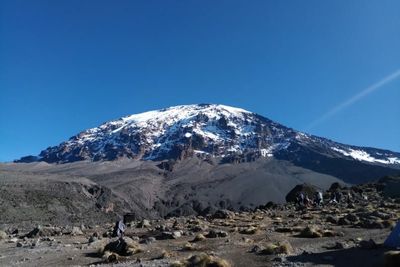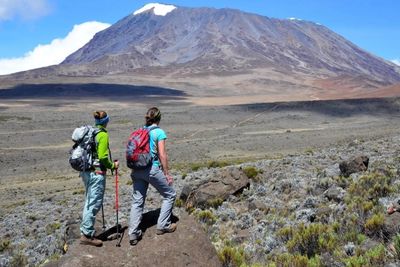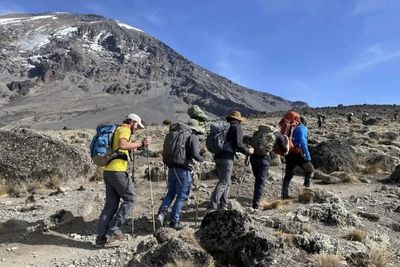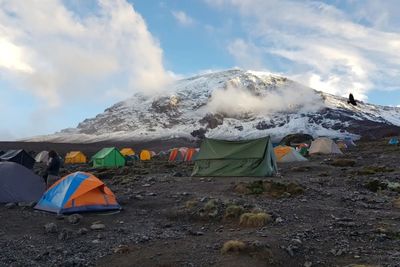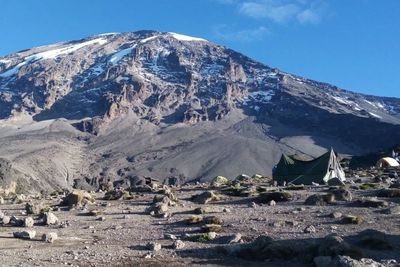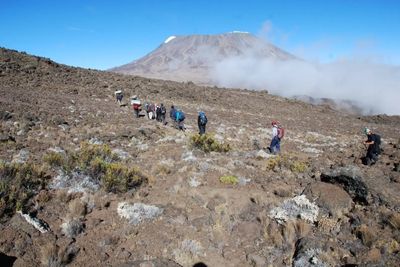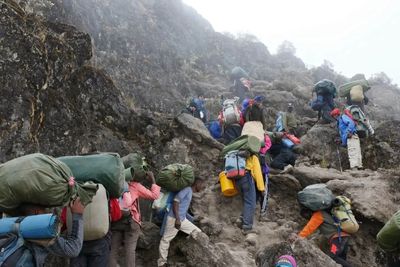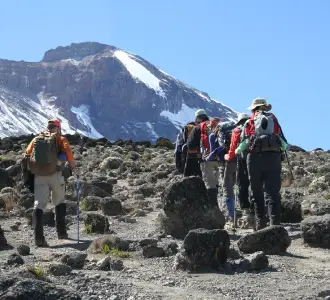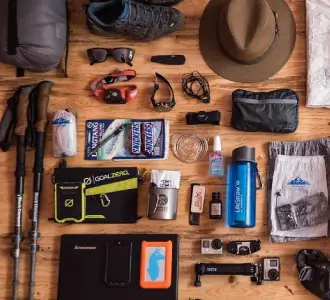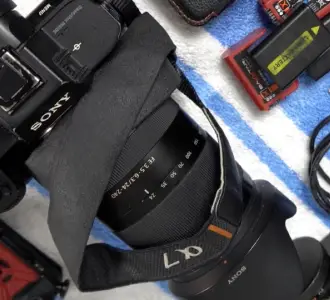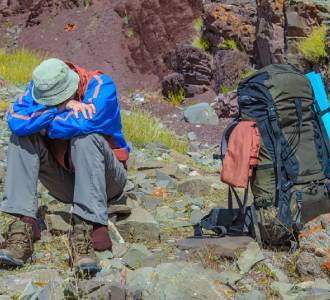When Climbing Mount Kilimanjaro, you’ll pass through four climate zones—rainforest, moorland, alpine meadows, and Arctic desert.
Conditions range from hot and humid at lower elevations to freezing and snowy at the summit. The weather changes quickly, so packing the right clothing is essential for a comfortable climb.
Each piece of clothing has a role in keeping you warm, dry, and ready for the trek. Below, you’ll find detailed guidance on what to include in your Kilimanjaro Packing List.
- Fleece Jacket – This is a key insulation layer to keep you warm, especially in the evenings at camp. A fleece jacket can be worn over a trekking shirt or on its own, and you’ll use it on most days of your climb.
- Opt for Polartec-200 fabric for extra warmth, and consider taking 2-3 jackets. Hooded fleece jackets provide additional protection against the cold.
- Warm Down Jacket – You’ll need a down jacket for cold nights at camp and the final summit push. Choose a jacket that keeps you warm down to -15°C (5°F) but isn’t too bulky. A water-resistant exterior is vital for protection against unexpected rain or snow. Make sure the jacket has a hood for added warmth.
- Hard Shell Rain Jacket (Gore-Tex or Similar) – A rain jacket will be useful from day one, especially in areas where conditions can turn rainy or windy. It acts as a protective outer layer, worn over thermal wear and fleece. Keep it handy for quick access, as weather can change rapidly on the mountain.
- Trekking Pants – Comfortable trekking pants are ideal for most of your climb. If you prefer hiking in shorts, pack pants for higher altitudes and cooler nights. Choose the lightweight, breathable fabric to help regulate body temperature.
- Rain Pants (Membrane Pants) – Rain pants protect against wind and rain when worn over trekking pants. They are essential during the rainy season to keep you dry and warm. Look for waterproof and windproof features for the best experience.
- Warm Trousers or Ski Pants – For the coldest parts of your climb, warm trousers or ski pants are necessary. Choose pants that are fleece-lined and water-resistant, suitable for temperatures below -15°C (5°F). They will provide comfort during summiting and in high-altitude camps.
- Thermal Underwear and Shirts – Pack 5-6 pairs of underwear and at least two sets of thermal layers. Lightweight synthetic underwear is best for regular days, while a warmer wool blend is ideal for the summit night.
Also, pack 3-4 short-sleeved shirts and 2 long-sleeved ones, avoiding cotton. Fabrics like polyester or nylon work well because they dry quickly and breathe easily.
Preparing for Mount Kilimanjaro Climbing means having the right clothes to tackle various climates. Layering is the primary factor, as it allows you to adjust your clothing to match the conditions throughout the day.
With these essentials in your Mt Kilimanjaro Packing List, you’ll be ready for whatever the mountain throws at you. Happy hiking!









